Filr displays your documents and files in a table with columns and rows that you can customize. In this guide, we’ll go through all of these options.
Customize your library’s rows and columns
To find your library layout settings, take the following steps:
- From your WordPress dashboard, go to Filr > Settings and click on the Libraries tab at the top of the page.
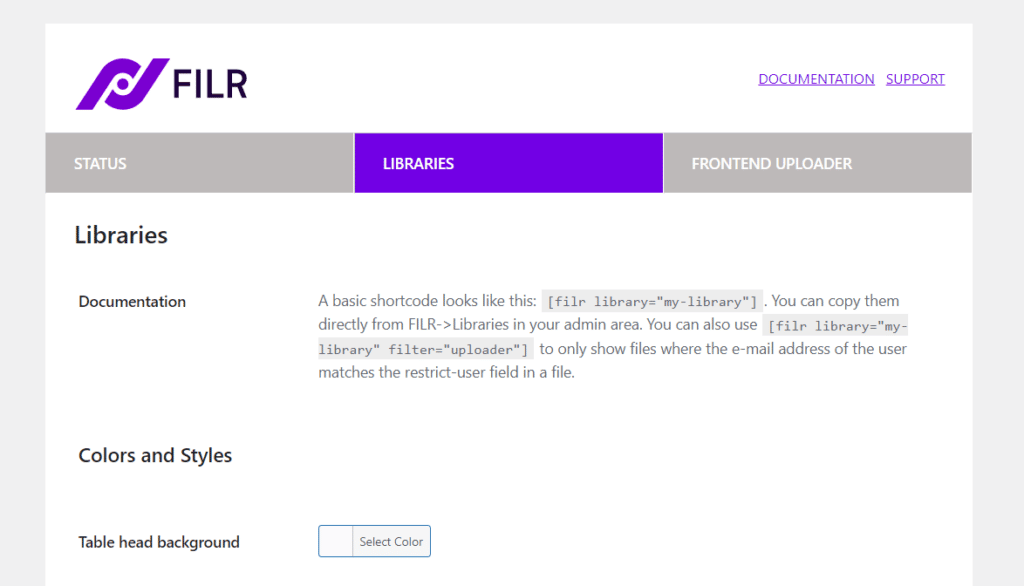
- Once here, scroll down to the Rows section.
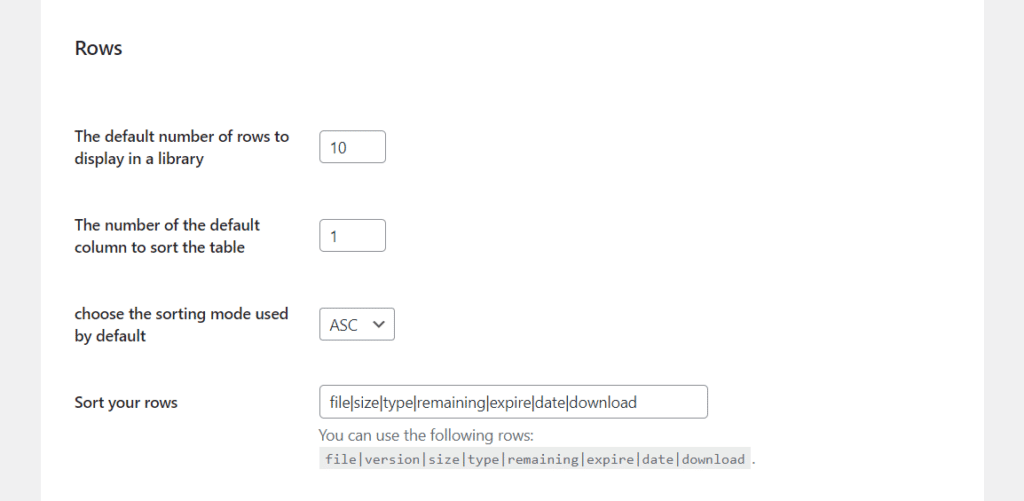
- The first setting (The default number of rows to display in a library) allows you to select how many rows you want to display in the library. If you have more files than this in your library, they’ll run onto a new ‘page’. People viewing your library will then be able to navigate through these with the Previous page and Next page navigation links at the bottom.
- The number of the default column to sort the table allows you to decide which column should be used to sort your library by default. All columns have a numeric index starting with 1. So in our case, “file” is the column with the index of 1, size is the column with the index of 2, and so on.
- Choose the sorting mode used by default allows you to select which sorting method you want to use by default, ascending or descending. When viewers are sorting your table on the front end of your site, they’ll be able to change this by clicking the arrows on the table.
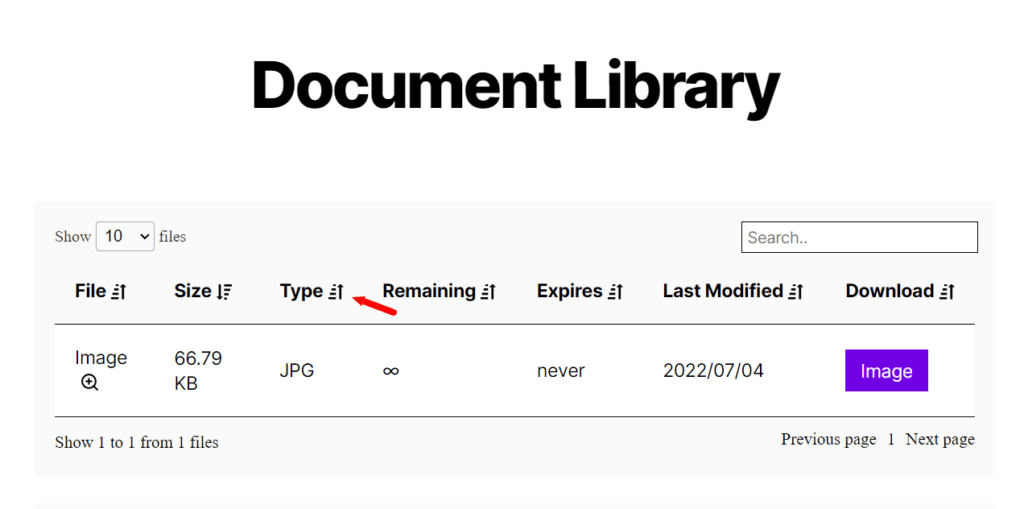
- The Sort your rows section allows you to determine which order you want each of the columns of your table to be in. It also provides you with a list of available columns underneath. Edit this field to change the order but make sure to include | in between each column name.
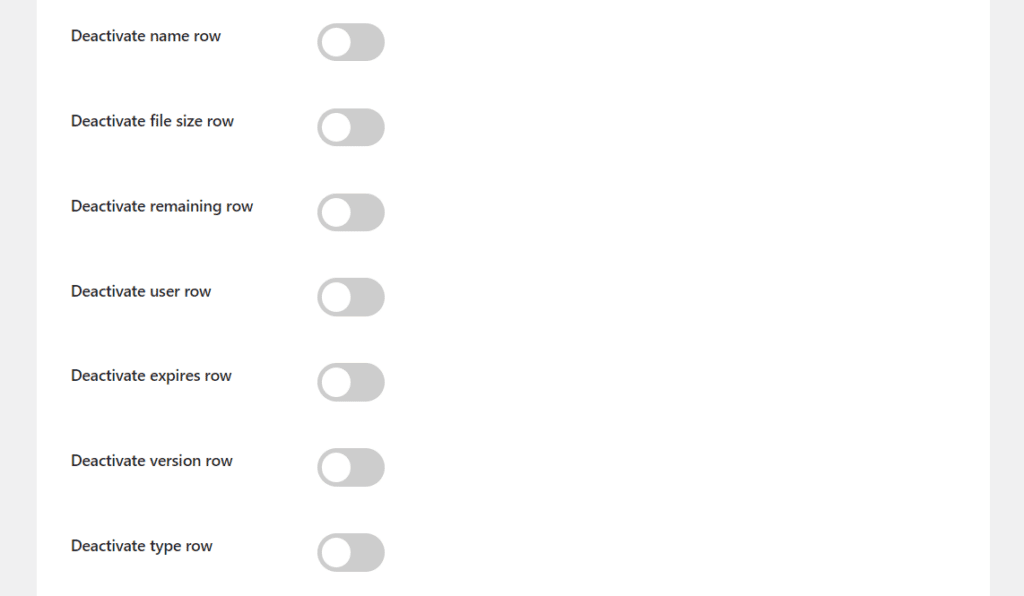
- Next are a number of columns you can deactivate by clicking the toggle button next to them. These include the following:
- Name row
- File size row
- Remaining row
- User row
- Expires row
- Version row
- Type row
- Date row
- You’ll also be able to click the toggle button next to Show publish date instead of last modified date, to change how the file date appears.
Additional library layout settings
- Underneath the Rows section, you’ll find the Additional section.
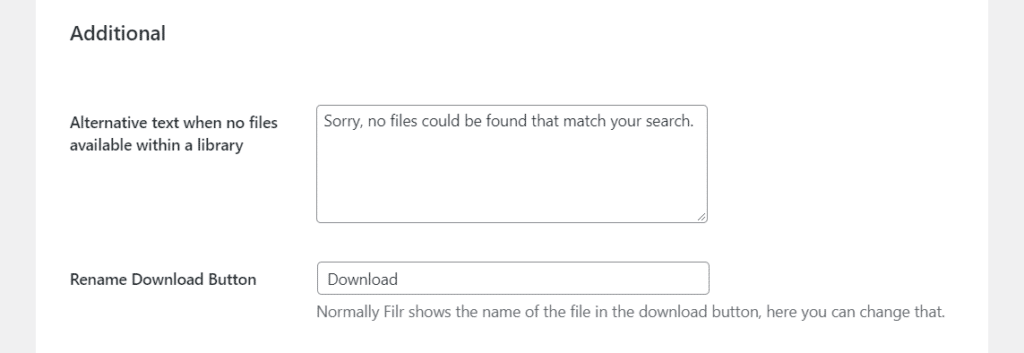
- The textbox next to Alternative text when no files available within a library allows you to show a message when a user has filtered or searched in your library, and no files are found.
- Rename Download Button allows you to change the wording on the download button for a file. By default, Filr shows the file’s name in the download button. If you’d rather it said something like ‘Download,’ you can add that here.

- Underneath are several other settings you can turn on and off with toggle buttons:
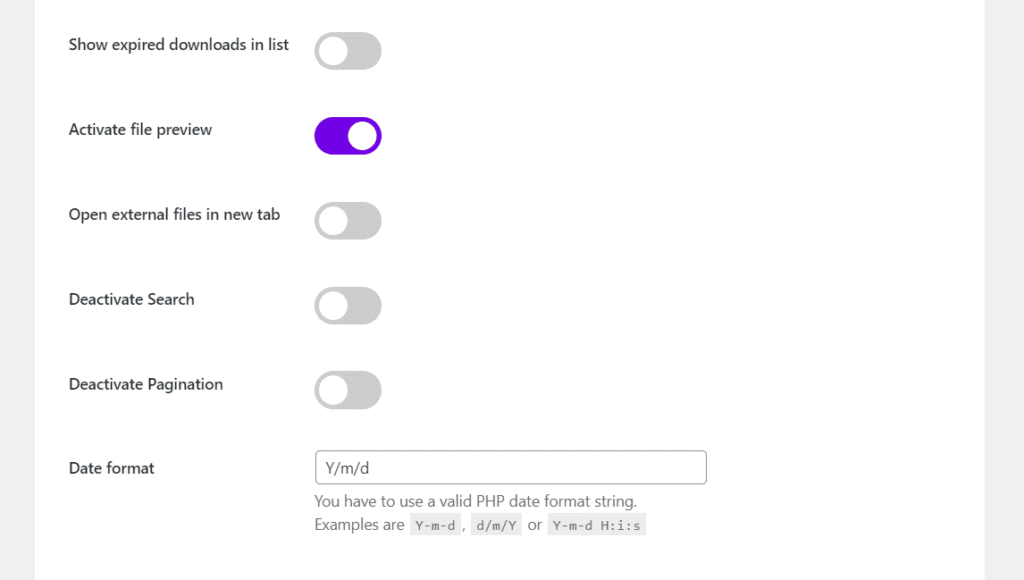
- Show expired downloads in list – if you have downloads that expire, you can choose to display them or hide them with this toggle button.
- Activate file preview – the file preview appears as a magnifying glass icon next to the file name. When hovered over, users can see a preview of what the file looks like. You can turn this on or off here.
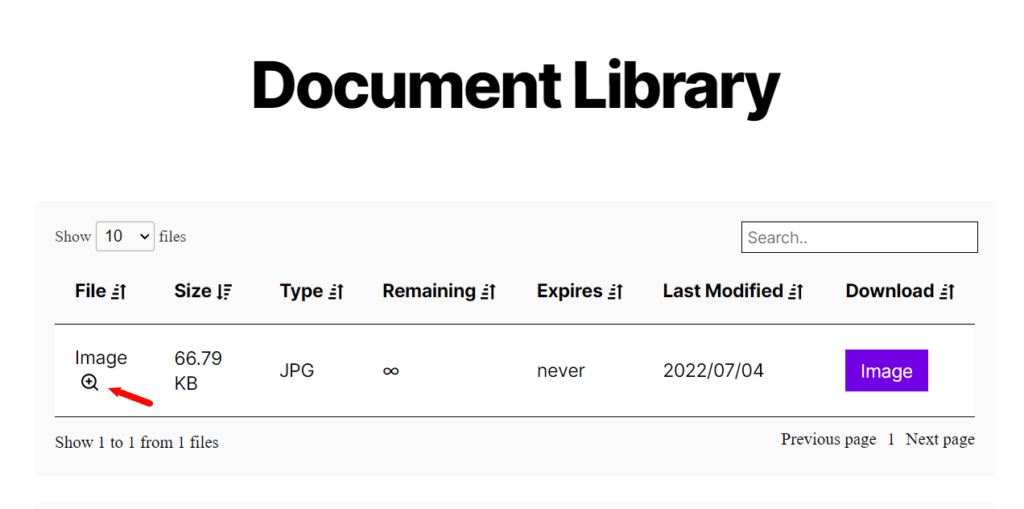
- Open external files in new tab – if you’ve added external files to your library, you can decide if you want them to open in a new tab or not with this toggle button.
- Deactivate Search stops users from being able to use the search bar at the top of your library by hiding it.
- Deactivate Pagination prevents users from navigating through your library if you have more files than displayed on the first screen. Note that if you turn this off, users won’t be able to navigate through your library via pagination. Instead, they will need to search or filter.
- Date format allows you to set whichever date format you’d prefer to use for your library.
- Once you’re happy with all the changes, you’ve made here, scroll to the bottom of the page and click the purple Save Changes button.